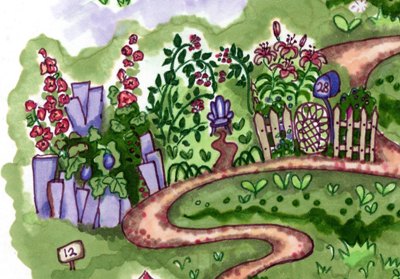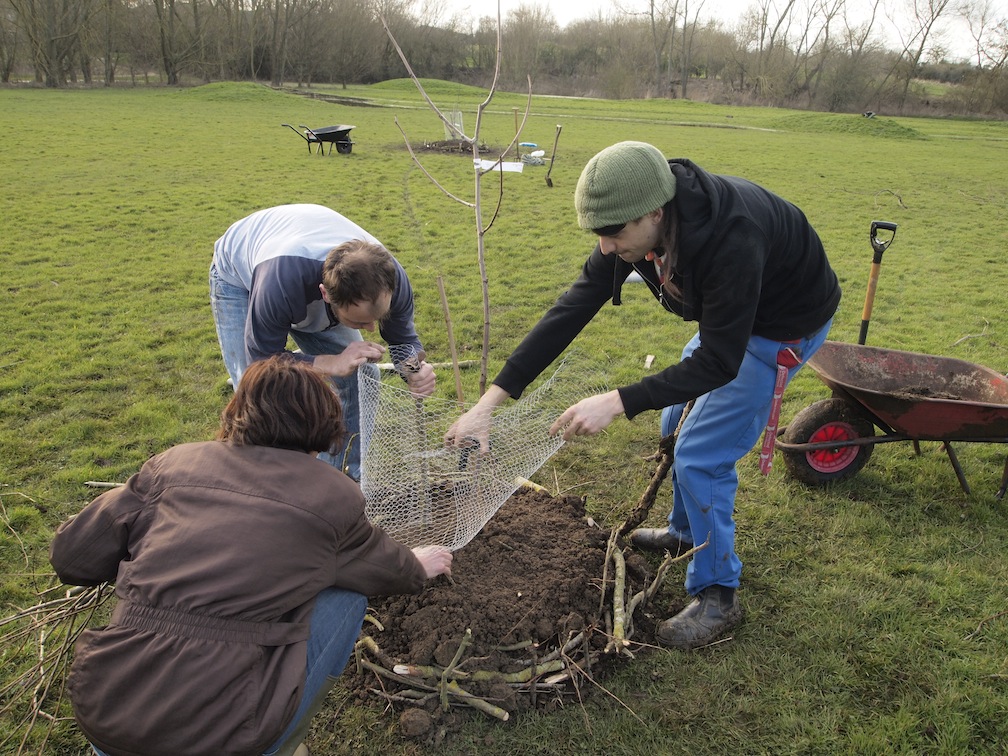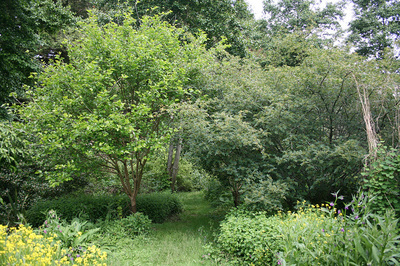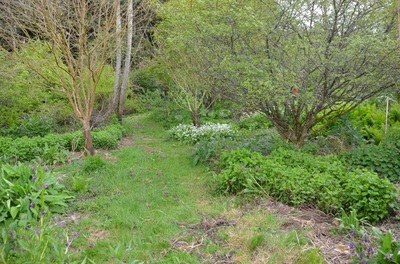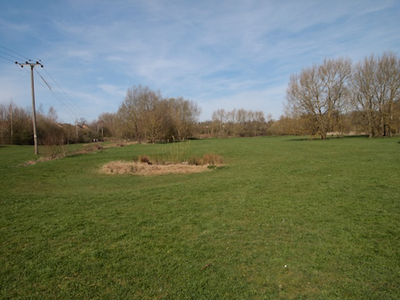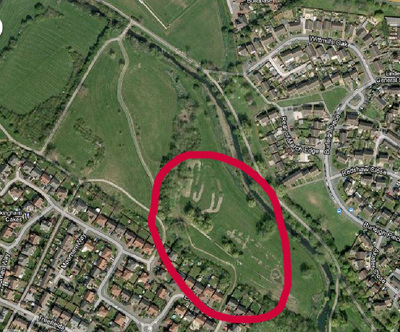What is the EW?
For all the residents of Buckingham and the surrounding villages
to enhance the well-being and beauty of the community by local people growing edible and useful plants in a natural and sustainable way, increasing social interaction in the community, by creating an educational relaxing garden in an attractive setting. |
Principles of the edible woodland
To bring people together, through growing,
To be edible or useful The work is to be shared, anyone can participate It should be beautiful and relaxing, as well as functional, A place to be proud of and benefit our green space, A place to learn and educate us and our children, Developing and maintaining this garden must be fun, Owned by the local community, Promote wildlife, Source locally where possible. |
Where it is
|
How it started
We started off getting a core group of interested people together, and thought about doing something to get involved in a ecological and community activity.
Firstly, we thought about a community garden, to grow vegetables and plants. It would be created by residents. We then put hundreds of leaflets through letter-boxes, and around the town. We also hosted an event in the university. We invited interested people to come along... and no-one turned up! |
Then we changed our plans a little, and thought about creating something that was low-maintenance. And we were already thinking about a forest garden somewhere. Neil then suggested we do a forest garden instead of the community garden. Great idea.
We spent the next year looking for a suitable location. Robin Stutchbury help us out, and we finally decided on the location we are at now.
We then spent the next year getting permission from the council, and setting up the group officially. We had to get a bank account, set up an official group, and create all sorts of documents. In addition we had to pay for insurance, and pay the council £1000!
Whilst we were preparing, we hired Claire White - a permaculture garden designer and lecturer. Her task was to create a design for us - as we had no idea what to do.
Finally, we got the land from AVDC, We're created the design concept with Claire White, and got some funding.
In 2014 we have planted the canopy trees, and cleared an area of grass and weeds.
In 2015 we put in the first plants
And in 2016 we are putting in more plants, ground cover,a nd expanding the area of land.
We spent the next year looking for a suitable location. Robin Stutchbury help us out, and we finally decided on the location we are at now.
We then spent the next year getting permission from the council, and setting up the group officially. We had to get a bank account, set up an official group, and create all sorts of documents. In addition we had to pay for insurance, and pay the council £1000!
Whilst we were preparing, we hired Claire White - a permaculture garden designer and lecturer. Her task was to create a design for us - as we had no idea what to do.
Finally, we got the land from AVDC, We're created the design concept with Claire White, and got some funding.
In 2014 we have planted the canopy trees, and cleared an area of grass and weeds.
In 2015 we put in the first plants
And in 2016 we are putting in more plants, ground cover,a nd expanding the area of land.
What is the Plan?
Concept
This is going to be a 'edible woodland' that will be a carefully designed and maintained ecosystem of useful plants. Soil nutrition and plant growth will be self sustaining. The concept behind this is usually known as 'Forest gardening', and has its roots in principles that here once common place around the world.
We want it to be primarily used to learn how to develop a garden in this way. We envisage a place that is very accessible to anyone, with prominent information that can help to inform people how the eco system actually works.
We need to plan it, decide whats going in the garden, its design, how big its going to be, and how to get funds. Here are some examples of other similar gardens:
This is going to be a 'edible woodland' that will be a carefully designed and maintained ecosystem of useful plants. Soil nutrition and plant growth will be self sustaining. The concept behind this is usually known as 'Forest gardening', and has its roots in principles that here once common place around the world.
We want it to be primarily used to learn how to develop a garden in this way. We envisage a place that is very accessible to anyone, with prominent information that can help to inform people how the eco system actually works.
We need to plan it, decide whats going in the garden, its design, how big its going to be, and how to get funds. Here are some examples of other similar gardens:
Examples of mature forest gardens
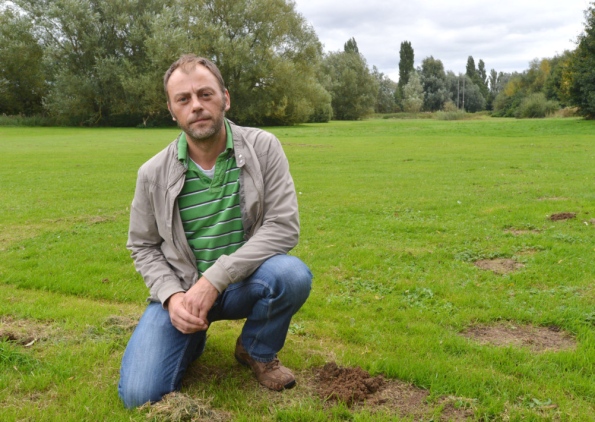
Published on the 11 October 2013
Plans for a communal Buckingham Woodland Garden have received a huge boost after the Local Area Forum agreed to donate nearly £3,000 towards the project.
The Buckingham Transition project to provide a long-term haven for families within the community has been informed of the grant from the forum, which works with local people to improve neighbourhoods for the benefit of all residents.
The aim is to develop a sustainable area of land at Heartlands by the River Great Ouse near the Moorhen Way estate.
John Mortimer, a member of Transition Buckingham said: “The initial concept was looking for land for local people to grow things communally, not like an allotment but a single garden where people would contribute to it and reconnect to where our food comes from as a community.
“The beauty of it is that everything from the woodland will be edible and over time it will become low maintence.
“We want to fill the area with herbs and shrubs where children can see all sorts and pick fruit which they can then use to put in things like cakes and other meals.”
As well as a fruit-bearing eco-system, Buckingham Transition wants to make it a pleasant place to go with parks and benches in the peaceful river surroundings. But Mr Mortimer believes the total cost will be around £5,000 over five years.
In the winter the group will host a Buckingham market stall where trees will be available for sponsor.
Sponsors will then be able to care for and help to maintain their tree in the woodland project.
For more information visit buckinghamtransition.co.uk
Plans for a communal Buckingham Woodland Garden have received a huge boost after the Local Area Forum agreed to donate nearly £3,000 towards the project.
The Buckingham Transition project to provide a long-term haven for families within the community has been informed of the grant from the forum, which works with local people to improve neighbourhoods for the benefit of all residents.
The aim is to develop a sustainable area of land at Heartlands by the River Great Ouse near the Moorhen Way estate.
John Mortimer, a member of Transition Buckingham said: “The initial concept was looking for land for local people to grow things communally, not like an allotment but a single garden where people would contribute to it and reconnect to where our food comes from as a community.
“The beauty of it is that everything from the woodland will be edible and over time it will become low maintence.
“We want to fill the area with herbs and shrubs where children can see all sorts and pick fruit which they can then use to put in things like cakes and other meals.”
As well as a fruit-bearing eco-system, Buckingham Transition wants to make it a pleasant place to go with parks and benches in the peaceful river surroundings. But Mr Mortimer believes the total cost will be around £5,000 over five years.
In the winter the group will host a Buckingham market stall where trees will be available for sponsor.
Sponsors will then be able to care for and help to maintain their tree in the woodland project.
For more information visit buckinghamtransition.co.uk
